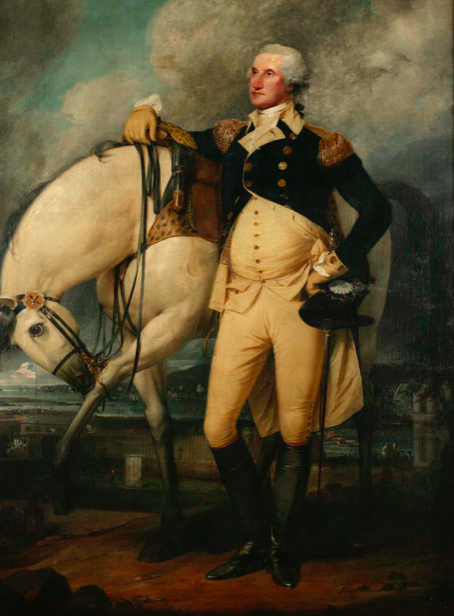Presidents Day officially became a holiday in 1885 to celebrate George Washington’s birthday. In 1971 it was moved from February 22 to the third Monday in February (to create a three day weekend).

Following his death in 1799, Washington’s birthday was treated as a day of remembrance. The federal holiday at first only applied in the District of Columbia, but was later expanded to the whole country. At the time there were only four nationally recognized federal banking holidays: New Year’s Day, July 4th, Thanksgiving and Christmas.
In his first Inaugural Address, President Washington described America as an experiment in democracy:
The preservation of the sacred fire of liberty and the destiny of the republican model of government are justly considered, perhaps, as deeply, and finally, staked on the experiment intrusted to the hands of the American people. Click here for a link to the April 30, 1789 Address.
In his last message to Congress, President Madison (rightfully recognized as the “father of the Constitution”) indulged in “the proud reflection that the American people have reached in safety and success their fortieth year as an independent nation.” Click here for a link to Madison’s December 3, 1816 Eighth Message to Congress.
President Monroe, in his Final Address to Congress, explained that:
Our institutions form an important epoch in the history of the civilized world. On their preservation and in their utmost purity everything will depend. Click here for a link to Madison’s December 7, 1824 Final Message to Congress.
In his Farewell Address, Andrew Jackson provided an update on our noble experiment and Washington’ legacy. Jackson explained that Washington regarded the constitution as an experiment that Washington had been prepared to sacrifice his life to secure:
The lessons contained in this invaluable legacy of Washington to his countrymen should be cherished in the heart of every citizen to the latest generation; and perhaps at no period of time could they be more usefully remembered than at the present moment; for when we look upon the scenes that are passing around us and dwell upon the pages of his parting address, his paternal counsels would seem to be not merely the offspring of wisdom and foresight, but the voice of prophecy, foretelling events and warning us of the evil to come. Forty years have passed since this imperishable document was given to his countrymen. The Federal Constitution was then regarded by him as an experiment–and he so speaks of it in his Address–but an experiment upon the success of which the best hopes of his country depended; and we all know that he was prepared to lay down his life, if necessary, to secure to it a full and a fair trial. The trial has been made. It has succeeded beyond the proudest hopes of those who framed it. Click here for a link to Jackson’s Farwell Message.
President Woodrow Wilson agreed that the founding generation “looked upon the new federal organization as an experiment, and thought it likely it might not last.”
In the book The Cycles of American History, Arthur M. Schlesinger, Jr. summarized the ebbs and flows of American history. Schlesinger also recognized that the founders were engaged in a monumental gamble.
In the very first paragraph of the first Federalist essay, Alexander Hamilton wrote that the American people “had the opportunity by their conduct and example, to decide the important question, whether societies of men are really capable or not of establishing good government from reflection and choice, or whether they are forever destined to depend for their political constitutions on accident and force.” Click here to a link to Federalist No. 1.
As we celebrate Presidents Day, it is useful to recognize that our once fragile experiment in democracy is now the oldest running democracy in the history of the world. Thank you, Presidents, and their right hand men and women.
Here are a selection of blog posts about our early Presidents:
Presidential leadership under George Washington
John Adams and the Massachusetts Constitution
Thomas Jefferson and the Declaration of Independence
Madison and America’s Second Revolution
Madison breaths life into the Constitution at the First Congress